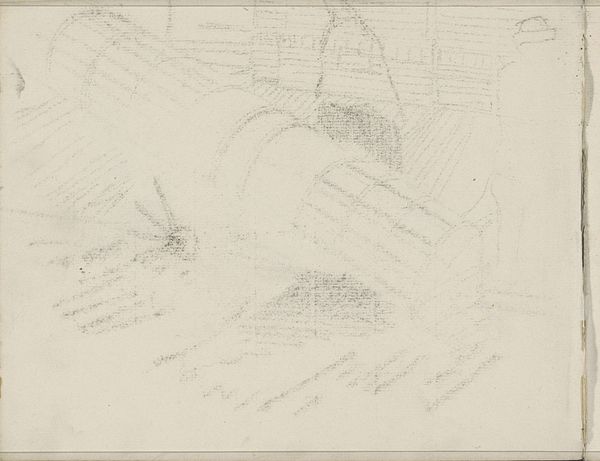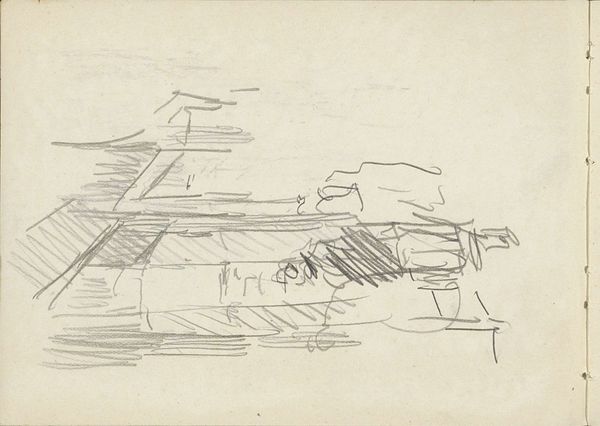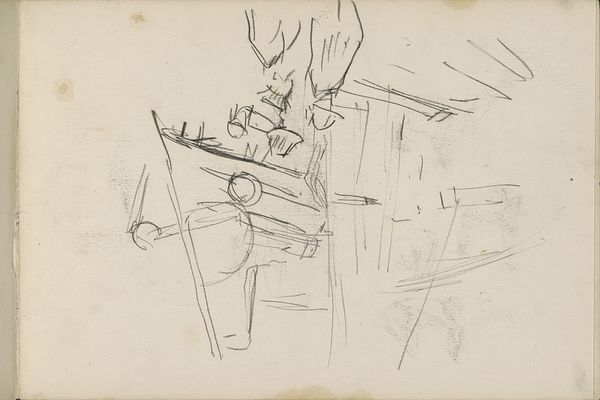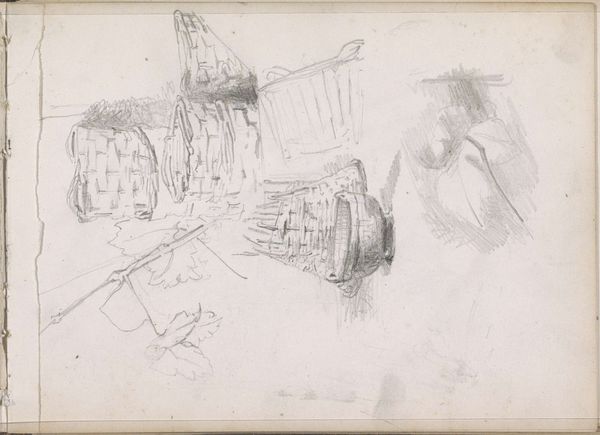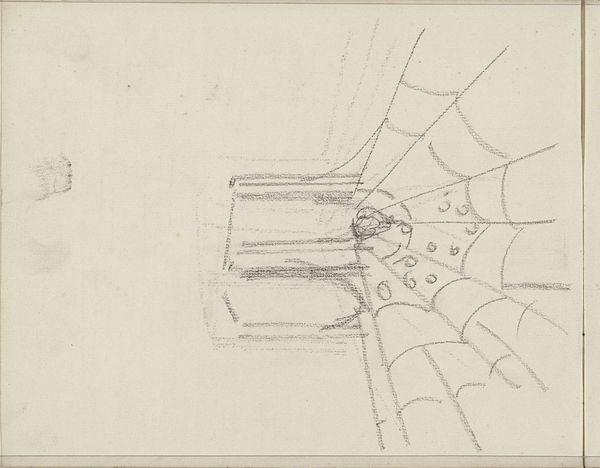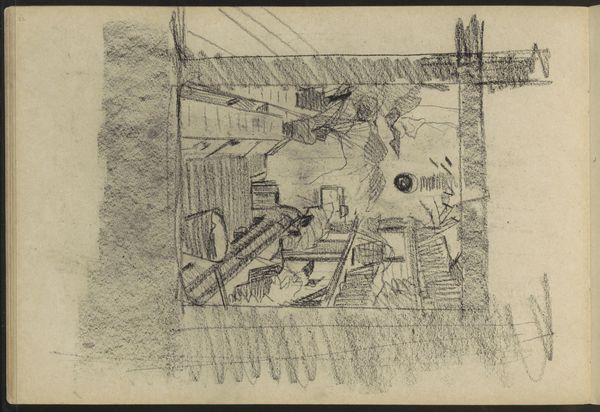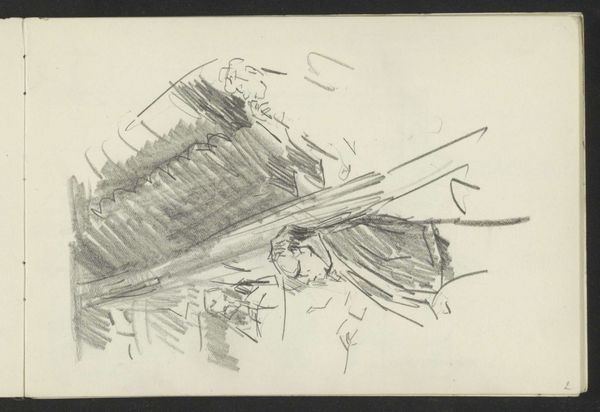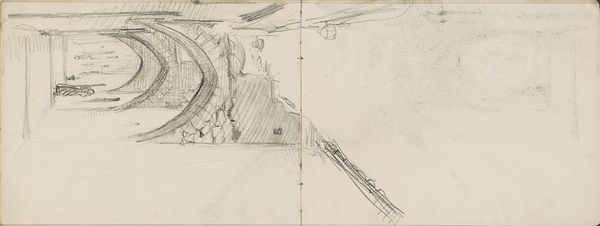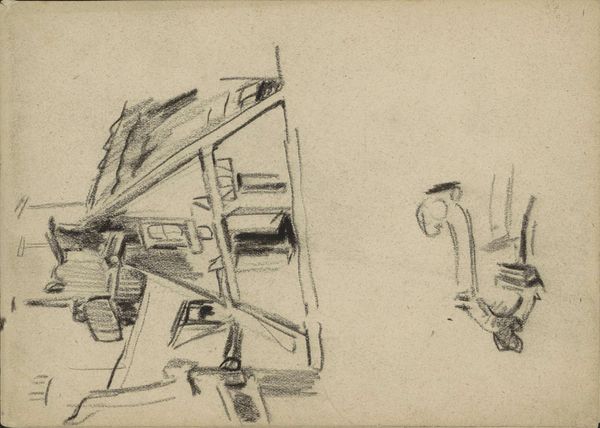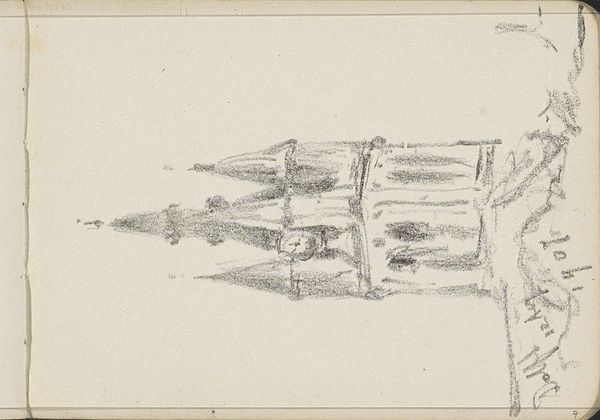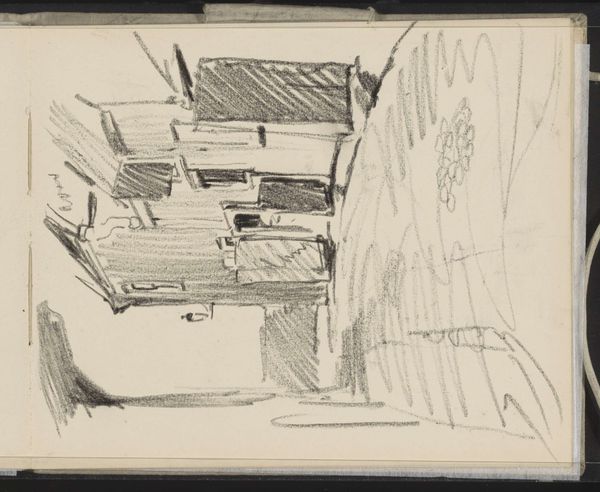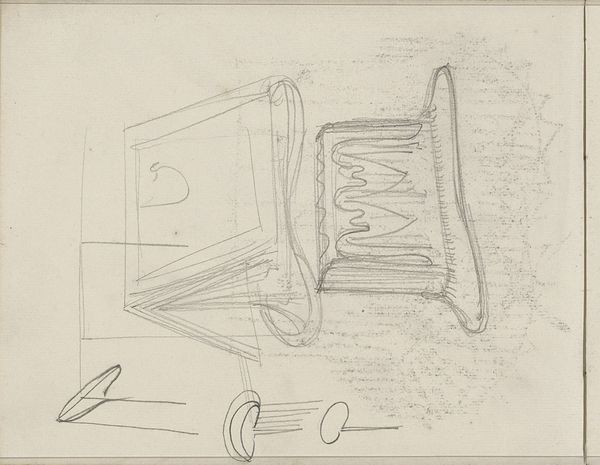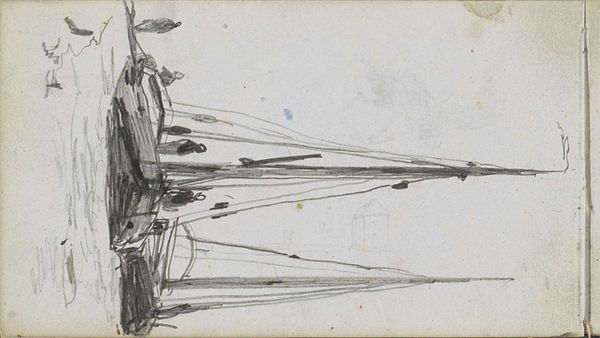
Copyright: Rijks Museum: Open Domain
Curator: Today we’re looking at "Kanon," a pen and pencil drawing made in 1896 by Carel Adolph Lion Cachet, currently residing here at the Rijksmuseum. Editor: The hurried, almost scribbled lines create such a sense of immediate action. I can almost feel the weight and hear the rumble of that massive artillery piece. Curator: It's quite intriguing how Cachet captures the essence of this instrument of war. Artillery, across many cultures, carries potent symbolic weight. Power, defense, but also, obviously, destruction and the potential for radical change in societal structures. Editor: Absolutely, but what I find equally compelling is the composition itself. The way the cannon dominates the foreground, juxtaposed with the sketch of the figure. Notice the play of light and shadow created through varying densities of lines? Curator: That stark contrast emphasizes the tangible, material presence of the cannon against the faceless almost ghostly figure near it. Symbolically, we could view this faceless figure as representing the masses— nameless, nearly invisible—that are always touched, driven and used by instruments of military power. Editor: Perhaps. The formal rendering evokes more personal notions in me, though. The overall impression I am left with suggests transience, temporality. That heavy use of diagonal strokes enhances the feeling of motion and instability. This does not feel so much like something fixed as if he saw it one day and had to quickly capture it with pencil. Curator: Very true, and perhaps that speaks to the symbolic ambiguity. In some eras and settings a cannon symbolized a promise of stability through strength, in others it presaged unsettling disruption. Editor: Precisely. And ultimately, I think it's the masterful blend of texture, contrast, and form that elevates what could have been a simple pen sketch to a work brimming with tension. Curator: A fruitful reminder of how even seemingly straightforward images can offer so much to reflect upon. Editor: Yes. As usual, it's the convergence of subject matter and compositional decisions that grants a work like this lasting resonance.
Comments
No comments
Be the first to comment and join the conversation on the ultimate creative platform.

